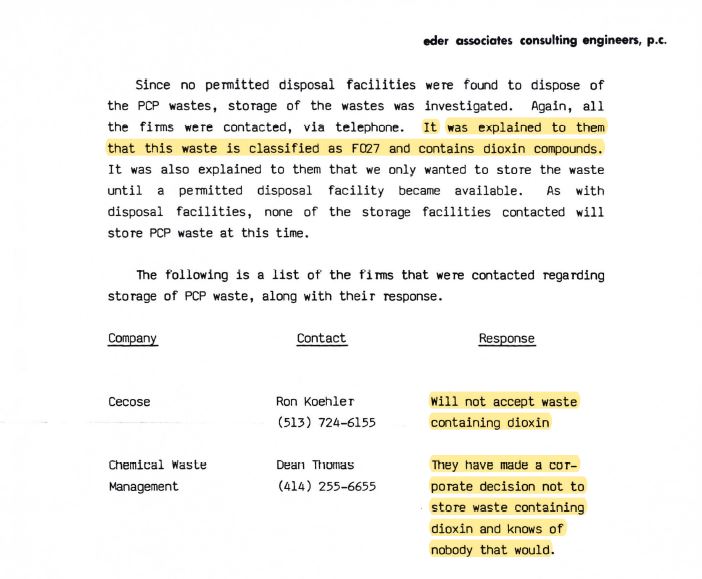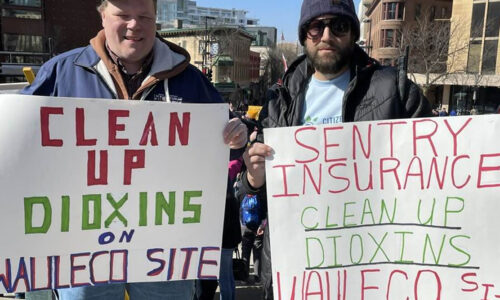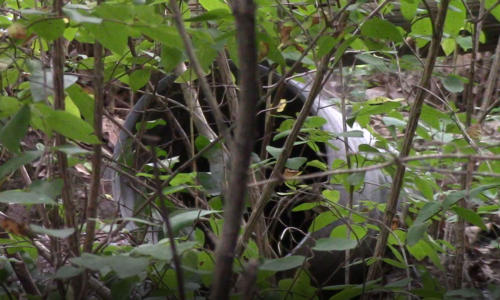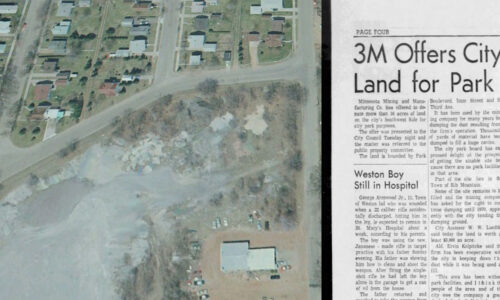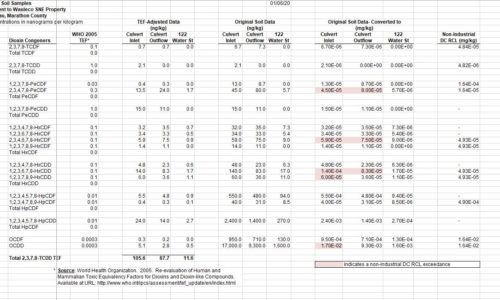
DNR Docs: Building on Western Edge of Riverside Park Had Been an SNE Drum Storage Site for “Waste Containing Dioxin”
- Dioxin, Drum Storage, Historical Documents, SNE / Wauleco / Sentry Insurance
- dioxins, drum storage site, pentachlorophenol, riverside park, sentry insurance, sne, Wauleco - A Sentry Insurance Subsidiary
- November 1, 2018
Near the current culvert area, in 1986, after numerous waste disposal and storage facilities stated they would not accept SNE’s dioxin-containing waste, official records show that the company then used a building on the western border of Riverside Park to store the drums. A diagram from DNR files shows that it had the capacity to store 136 drums of this waste at one time.
It is unclear whether the DNR provided information on SNE’s former waste drum storage facility, or on the materials scattered near that area in historical photos, to the Wausau City Council or the Wausau Parks and Recreation Committee during the 2018 period in which Riverside Park dioxins were being addressed.
Now demolished, aerial images from 1974, publicly available through County/City GIS data, show the former location of this structure, as well as unidentified materials stacked and scattered in those images near the culvert area. The approximate culvert location is identified below in a Department of Public Works mapping diagram from the City of Wausau in 2018.
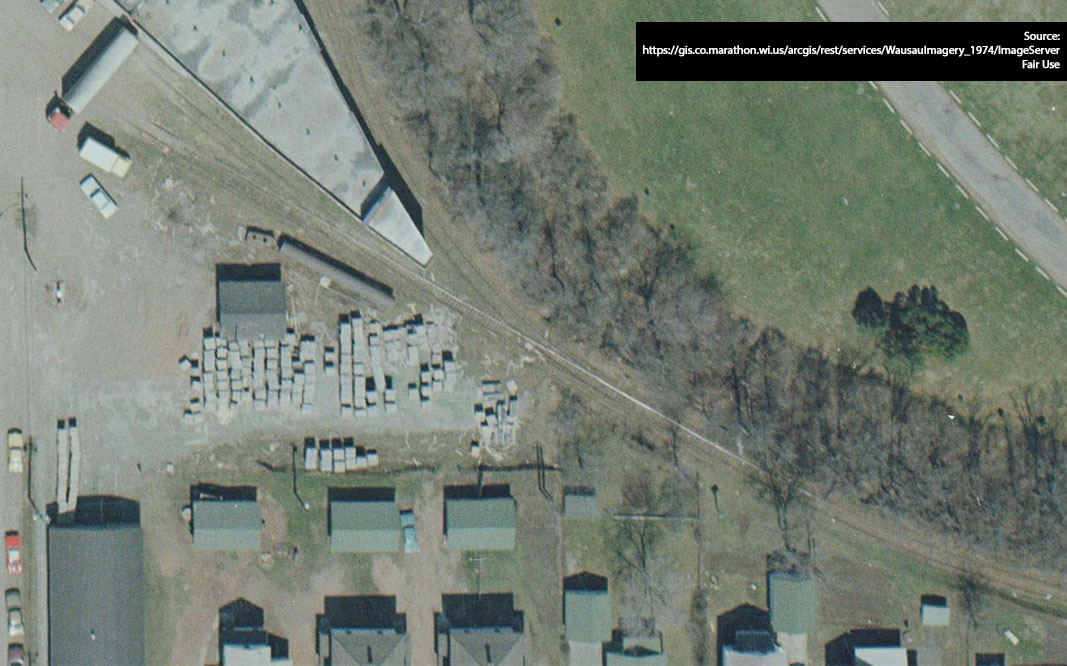
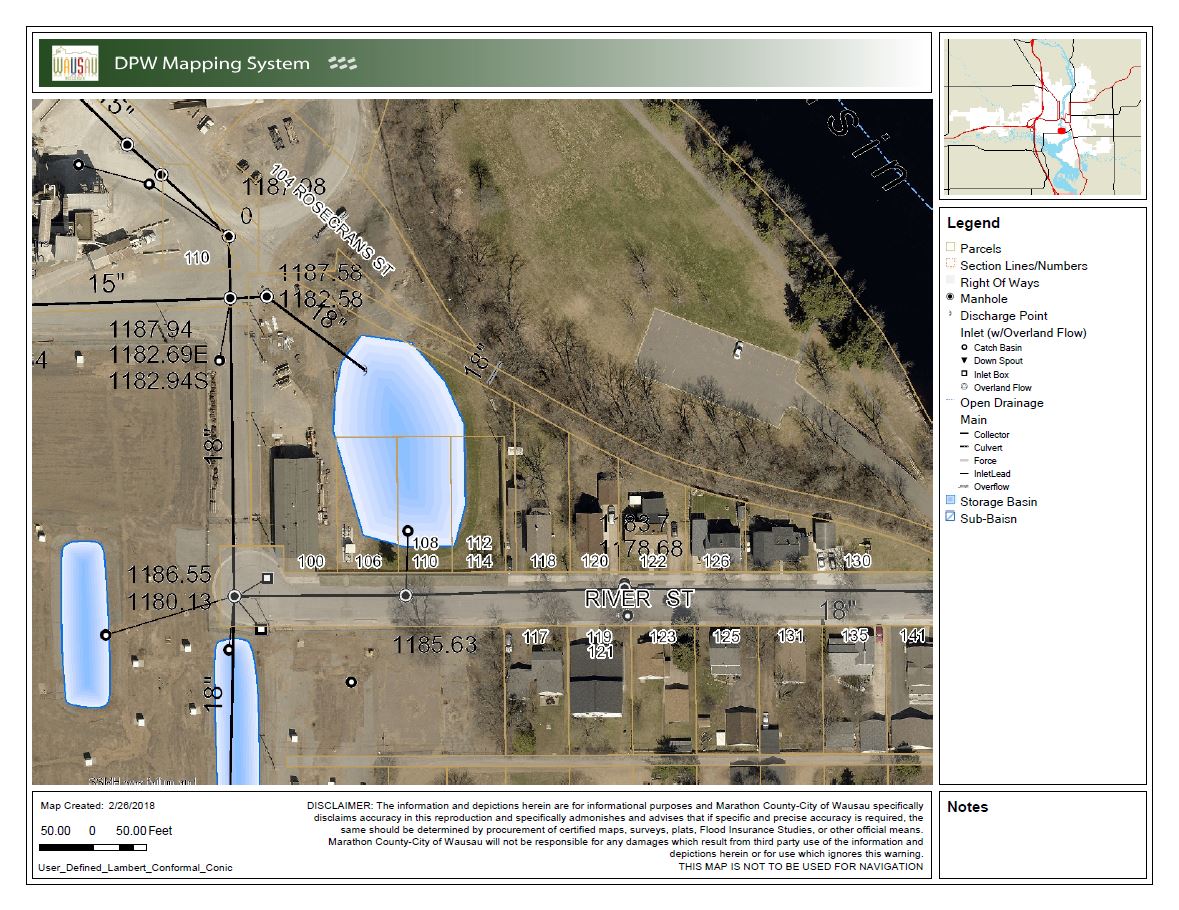
The building was used for waste drum storage in the 1980s after pentachlorophenol contamination had been identified at the SNE site and in the neighborhood’s groundwater. The SNE site was the former Crestline site and is the current Wauleco site.
Sentry Insurance purchased Crestline in 1981 and the Wausau property became the SNE site.
November 21, 1985 correspondence from the DNR to SNE indicates that the DNR was aware even at that time that the company’s waste contained dioxins and that SNE required a storage extension because the company was in need of a waste disposal firm that would handle it. The DNR wrote in that correspondence (emphasis added):
“Due to SNE’s temporary, unforeseen and uncontrollable circumstances in finding a waste disposal firm to handle your pentachlorophenol (PCP) waste, which contains dibenzo-p-dioxins and dibenzofurans, the Department of Natural Resources grants a thirty (30) day extension from the date of this letter.”
Yet even in April 1986, SNE and Eders could not find a waste disposal or storage facility to accept the penta-and-dioxin-contaminated waste as noted in SNE’s and Eders’ “Application for Variance Wisconsin Hazardous Waste Regulation NR-181” of that date.
In these documents, the consultant, Eders, conveys to the DNR that no disposal facility contacted, though contacts were numerous, would accept SNE’s waste. The documents show that several waste disposal and storage facilities flatly rejected the possibility because it was “waste containing dioxin.”
Underscoring how unacceptable the waste had been, even to a professional waste company, the response Eders listed next to the group named Chemical Waste Management, states (emphasis added):
“They have made a corporate decision not to store waste containing dioxin and knows of nobody that would.”
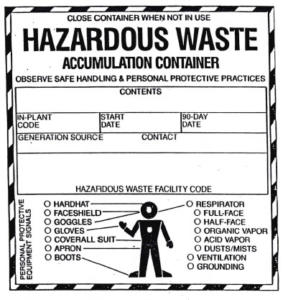
Given the predicament of where to send the waste drums, it was apparently decided that the waste would be stored at the western edge of Riverside Park in a former cold storage facility, which had the capacity to hold 136 drums at one time, according to records and diagrams.
It is unclear from the documents why the DNR and the City of Wausau thought having a large drum storage site with dioxin-containing waste that immediately bordered a public park in a largely-residential neighborhood was a good idea.
Dioxin and furan soil exceedances were identified in Riverside Park and the residential area south of the park. The highest soil dioxin levels discovered in the neighborhood (that were not on the Wauleco site), were near the culvert inlet and outfall areas. Those soil samples were taken in 2006.
The DNR’s stated position in 2018 was that if it could identify the source of the dioxin contamination in the park soil, it could legally require further testing or remediation in the park from the responsible party. Thus far, no further testing or remediation has occurred.
